<< Previous | Displaying results 3051-3100 of 6769 for "" | Next >>
Jewish refugee children—part of a Children's Transport (Kindertransport)—from Vienna, Austria, arrive at Harwich. Great Britain, December 12, 1938.
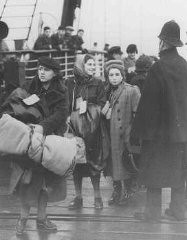
Jewish refugee children, part of a Children's Transport (Kindertransport) from Germany, upon arrival in Harwich. Great Britain, December 12, 1938.
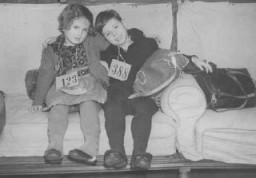
Two Austrian refugee children, part of a group of predominantly Jewish refugee children on a Children's Transport (Kindertransport), upon their arrival in Great Britain. Harwich, Great Britain, December 12, 1938.
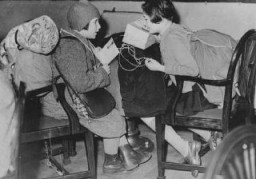
Jewish refugee children from Germany—part of a Children's Transport (Kindertransport)—at the holiday camp at Dovercourt Bay, near Harwich, shortly after their arrival in England. Dovercourt Bay, Great Britain, after December 2, 1938.
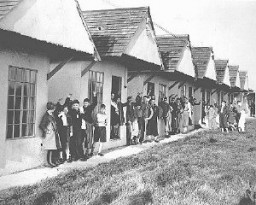
Portrait of a gay couple. Berlin, Germany, ca. 1930. Nazi ideology identified a multitude of enemies and led to the systematic persecution and murder of many millions of people, both Jews and non-Jews. The Nazis posed as moral crusaders who wanted to stamp out the "vice" of homosexuality from Germany in order to help win the racial struggle. Once they took power in 1933, the Nazis intensified persecution of German male homosexuals.
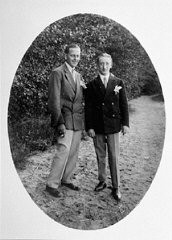
A couple dances at the Eldorado, a nightclub frequented by members of Berlin's gay and lesbian community. The nightclub, along with other similar establishments, was closed by the Nazi government in the spring of 1933. Photograph taken in Berlin, Germany, 1929. Learn more about the Eldorado.
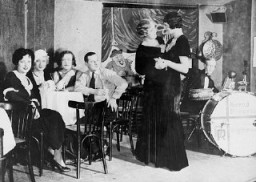
Identification pictures of a bartender from Duisburg who was arrested under Paragraph 175. Duisburg, Germany, August 27, 1936.

A waiter from Düsseldorf who was arrested by the Gestapo for allegedly having sexual relations with other men. Düesseldorf, Germany, 1938. [RW 58-61940] The Nazi regime considered homosexuality a moral vice that threatened the current and future strength of the German people. They carried out a campaign against male homosexuality that included shutting down gay and lesbian meeting places and arresting men under Paragraph 175, the statute of the German criminal code that banned sexual relations between…
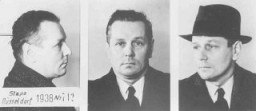
Identification pictures of a prisoner, accused of homosexuality, who arrived at the Auschwitz camp on June 6, 1941. He died there a year later. Auschwitz, Poland.
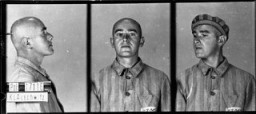
Identification pictures of a prisoner, accused of homosexuality, recently arrived at the Auschwitz camp. Auschwitz, Poland, between 1940 and 1945.
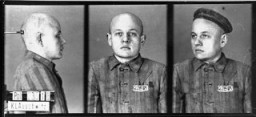
Official postcard for use by prisoners of the Esterwegen concentration camp. Esterwegen, near Hamburg, was one of the early camps established by the SS. The text at the left side gives instructions and restrictions to inmates about what can be mailed and received. Germany, August 14, 1935.
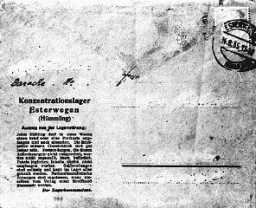
Uniformed prisoners with triangular badges are assembled under Nazi guard at the Sachenhausen concentration camp. Sachsenhausen, Germany, 1938.
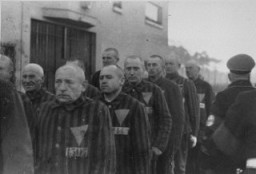
A Jewish man wearing a yellow star reads newly posted antisemitic regulations in Budapest. Hungary, 1944.
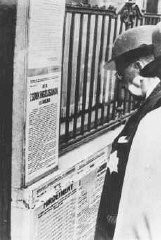
Entrance to the courtyard, marked with a Star of David, of a building designated for Jews. Budapest, Hungary, after April 2, 1944.
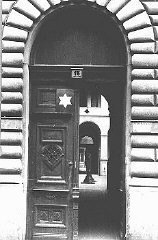
Arrow Cross Party members execute Jews along the banks of the Danube River. Budapest, Hungary, 1944.
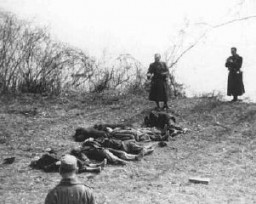
Arrow Cross Party members execute Jews along the banks of the Danube River. Budapest, Hungary, 1944.
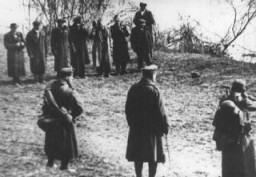
Deportation of Jews from the Jozsefvarosi train station in Budapest. Hungary, November 1944.
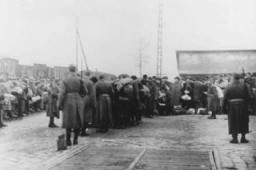
A meeting of the Warsaw ghetto Jewish council. Sitting behind table, 2nd to 4th from left: industrialist Abraham Gepner; chairman Adam Czerniakow; and lawyer Gustav Wielikowski. Warsaw, Poland, between 1939 and 1942.
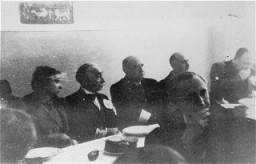
Mordechai Chaim Rumkowski, Jewish council chairman in the Lodz ghetto, seen here speaking amongst Jewish ghetto policemen. Lodz, Poland, ca. 1942.
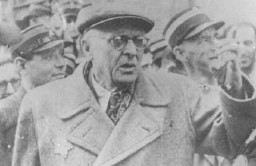
Lodz ghetto Jewish council chairman Mordechai Chaim Rumkowski delivers a speech. Lodz, Poland, 1941–43.
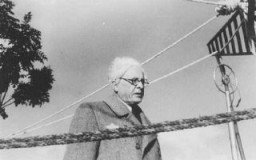
Jews in the Lodz ghetto line up outside the labor office of the Jewish council in the hopes of finding employment outside the ghetto. Lodz, Poland, between 1941 and 1943.
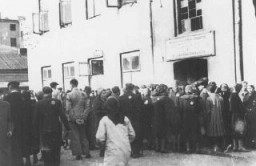
Employees of the Jewish council in the Kovno ghetto assemble during roll call, which was taken on a daily basis. Kovno, Lithuania, 1941–43.
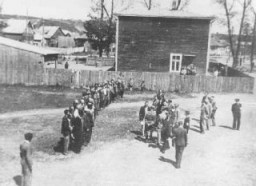
A meeting of the Kovno ghetto Jewish council. Chairman Elchanan Elkes sits at the center. Kovno, Lithuania, 1943.

Scene photographed by George Kadish: Jewish prisoners behind a barred window in the Kovno ghetto jail. The Jewish council administered its own jail in the ghetto. Kovno, Lithuania, 1943.
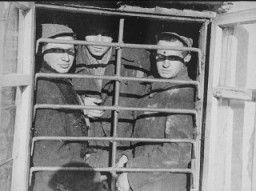
Jacob Edelstein, chairman of the Jewish council in Theresienstadt. He was deported, and shot in Auschwitz in 1944. Theresienstadt, Czechoslovakia, 1942–1943.
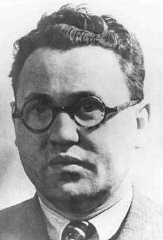
Jewish children in an orphanage operated by the Jewish council of the Vilna ghetto. Vilna, 1942.
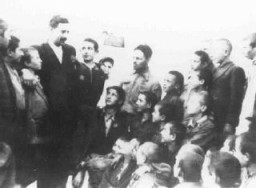
Gustav Schroeder, captain of the St. Louis, on the day of the ship's departure from Hamburg. Neither Cuba nor the US granted refuge to the ship's passengers. Germany, May 13, 1939.
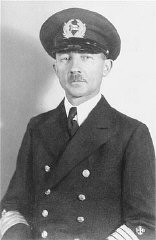
Boarding pass for Dr. Walter Weissler for a voyage on the St. Louis from Hamburg to Havana. When Cuban authorities refused the passengers entry, Weissler returned to France, where he survived in hiding. He died in Paris in 1996. Hamburg, Germany. Date of pass, May 13, 1939.

Jewish refugees from Nazi Germany board the St. Louis. The ship would be denied entry into Cuba and the United States and forced to return to Europe. Hamburg, Germany, May 13, 1939.
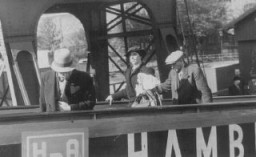
Refugees from Nazi Germany on board the St. Louis en route to Cuba. The passengers were denied entry into Cuba and the US and were forced to return to Europe. 1939.
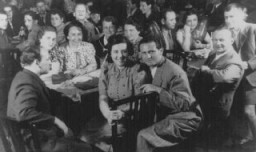
Jewish refugees aboard the refugee ship "St. Louis." The ship was denied entry into Cuba and the United States in 1939. Germany, 1939.
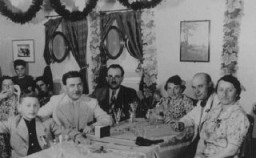
The St. Louis, carrying more than 900 Jewish refugees, waits in the port of Hamburg. The Cuban government denied the passengers entry. Hamburg, Germany, 1939.
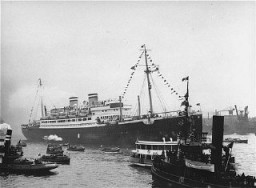
The St. Louis, carrying Jewish refugees from Nazi Germany, arrives in the port of Antwerp after Cuba and the United States denied it landing. Belgium, June 17, 1939.
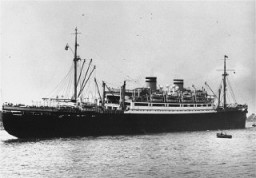
Belgian officials at the gangplank of the St. Louis after the ship was forced to return to Europe from Cuba. Belgium granted entry to some of the passengers. Antwerp, Belgium, June 1939.
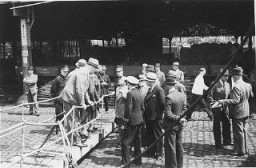
Jewish refugees from Nazi Germany, passengers on the St. Louis, disembark in the port of Antwerp. Cuba and the United States denied entry to these refugees. Belgian police guard the gangway. Antwerp, Belgium, June 17, 1939.
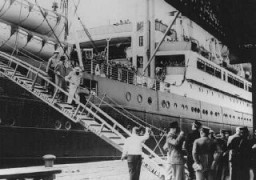
A British recruitment poster encourages Jews in Palestine to enlist in the Jewish Brigade Group. Palestine, January 1945. The Jewish Brigade Group of the British army, which fought under the Zionist flag, was formally established in September 1944. It included more than 5,000 Jewish volunteers from Palestine organized into three infantry battalions and several supporting units.
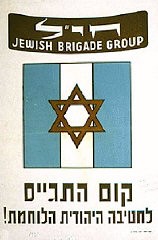
Brigadier Ernest Frank Benjamin, commanding officer of the Jewish Brigade, inspects the Second Battalion. Palestine, October 1944. The Jewish Brigade Group of the British army, which fought under the Zionist flag, was formally established in September 1944. It included more than 5,000 Jewish volunteers from Palestine organized into three infantry battalions and several supporting units.
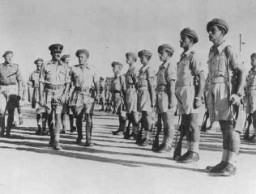
Unemployed men queued outside of a depression soup kitchen in Chicago.
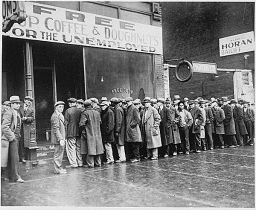
A long line of people waiting to be fed in New York City.
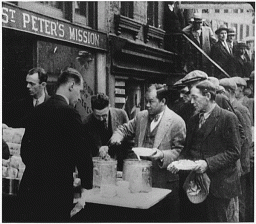
A farmer and his sons walk in the face of a dust storm. Cimarron County, Oklahoma. 1936
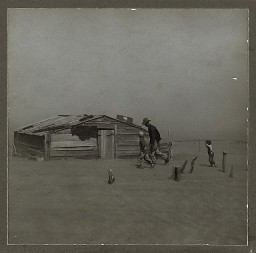
"Between Weedpatch and Lamont, Kern County, California. Children living in camp" by Dorothea Lange, April 20, 1940.
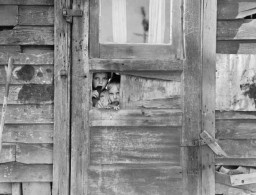
This 1938 racist illustration compares “German Youth” with “Jewish Youth.” It is subtitled, “From the face speaks the soul of the race.” It comes from Alfred Vogel's text Inheritance and Racial Hygiene. The Nazis used racist theories to label groups of people as inferior and as the "enemy." The Nazis claimed that "superior" races had not just the right but the obligation to subdue and even exterminate "inferior" ones.
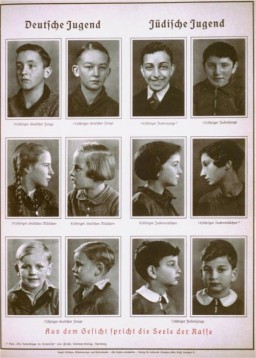
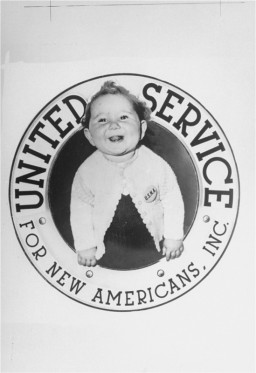
Illustration from an antisemitic German children's book, Der Giftpilz (The Poisonous Mushroom), used to indoctrinate children in the Nazi worldview. It was published in Nuremberg, Germany, in 1935. The caption to the image on the page shown here reads: "The Jewish nose is crooked, it looks like a 6."

The New Synagogue in Trieste, Italy. It opened in 1912 and was desecrated by the Nazis on July 18, 1942. Trieste, Italy, July 18, 1942.
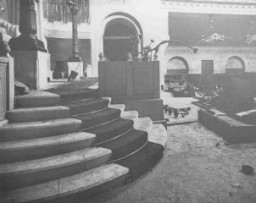
Poster calling for a boycott of German goods. Issued by the Jewish War Veterans of the United States. New York, United States, between 1937 and 1939.
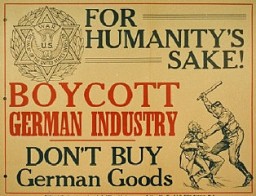
A large crowd gathers in front of the Rathaus to hear the exhortations of Julius Streicher during the Beer Hall Putsch, Hitler's early unsuccessful attempt to seize power. Munich, Germany, November 1923.
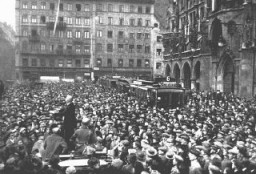
Adolf Hitler, Julius Streicher (foreground, right), and Hermann Göring (left of Hitler) retrace the steps of the 1923 Beer Hall Putsch (coup). Munich, Germany, November 9, 1934.
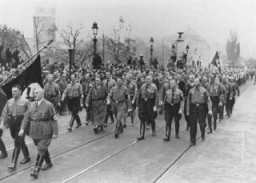
Adolf Hitler and other participants in the Hitler Putsch, during the annual anniversary celebration of his failed attempt to seize power. Behind Hitler stand Rudolf Hess (left) and Heinrich Himmler. Munich, Germany, November 9, 1934.
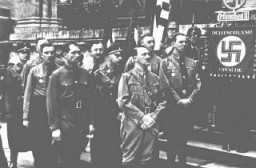
Participants in the July 1944 plot to assassinate Hitler on trial before the People's Court of Berlin. Berlin, Germany, August–September 1944.
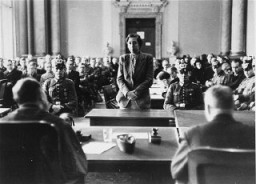
We would like to thank Crown Family Philanthropies, Abe and Ida Cooper Foundation, the Claims Conference, EVZ, and BMF for supporting the ongoing work to create content and resources for the Holocaust Encyclopedia. View the list of donor acknowledgement.